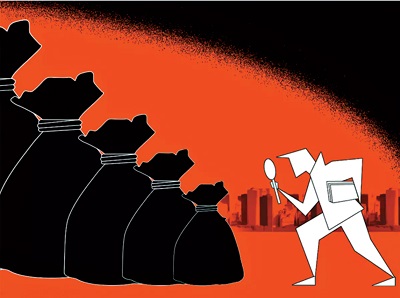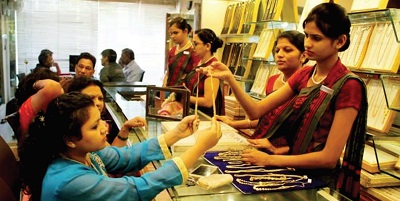The recent PMLA notifications issued to the G & J industry had the G & J industry reeling under its pressure and anxiety for sometime; Rohan Shah in conversation with Colin Shah, Chairman GJEPC comes forward to clear the air

The recent PMLA notifications issued to the G & J industry had the G & J industry reeling under its pressure and anxiety for sometime; Rohan Shah in conversation with Colin Shah, Chairman GJEPC comes forward to clear the air
The entire jewellery industry in the country has been brought under the Prevention of Money Laundering Act (PMLA). The Ministry of Finance issued an order pointing out that the jewellery transactions from December 28, 2020, will come under the PMLA. The Enforcement Directorate (ED) will have the authority to conduct detailed investigation if gold or money related to gold deals is seized without proper documents. The ED has started serving circulars to the jewellery owners in this regard
There are some clarifications which have come from the government and to discuss this matter in detail especially in connection with what the recent notification means for G & J industry -- Rohan Shah joined Colin Shah, Chairman GJEPC, at the IIJS Virtual 2.0 on January 9.
What is PMLA?
PMLA is the Prevention of Money Laundering Act (2002) and the rules which were added in 2005. The law was primarily incorporated to confiscate illgotten money. This money usually goes into funding illegal activities from human trafficking drug trafficking to terrorism and all kinds of anti-social activities. World over, money laundering is a serious problem. Often people dealing in precious metals and precious stones are used as mediums of exchange by these money laundering racketeers. Often, without the knowledge of the businessmen as well. When large sums of money are exchanged for jewellery in cash and when the jeweller deposits this cash in his bank account the aim of money launderers is achieved. In order to avoid such activities PMLA has been instituted and jewellery businesses are brought under its ambit.

Why are jewellers made a reporting agency?
The government has to keep track of all gateways of money – the legal or white channels of monetary exchange – where black money can be converted into white money (or accounted money) -- one important gateway is that of the jewellery retailer. The Government notices that real estate deals, purchase of gems and jewellery are important avenues where money can be laundered and therefore the government wants to bring curbs on
this activity.
Which agencies watch over the PMLA regulations?
There are two primary agencies: Directorate of Enforcement (ED) and Financial Intelligence Unit of India which watch over the PMLA enforcement.
There is a lot of confusion whether only bullion exchanges and loose diamond businesses are covered under PMLA or are small jewellery retailers also covered under PMLA?
Jewellers are definitely are covered under PMLA – any people engaging in sale or purchase of precious stones and precious metals are covered under PMLA.
What happens if small retailers are unable to comply with the regulations of PMLA?
Jewellers have to report cash transactions –the implicationis that customers may be bad – not that jewellers are bad. Jewellers have the responsibility of becoming a good reporting entity. If a jeweller fails to do his job as a reporting entity it is not the same thing as committing the offence of money laundering. Failure to report cash transaction can bring monetary penalty – which will range from Rs 10,000 to Rs One lakh this could be a daily charge for every offence or may vary from transaction to transaction. The exposure for an individual jeweller today, is that if you do not comply with the role of the reporting entity -- you are liable for monetary penalty.
For example, if you have a customer who is a drug trafficker who has a large amount of cash – this person comes to your shop and over a period of one year conducts a transaction of Rs 20 lakhs over one year. If you have knowledge of the ill-gotten means of your customer’s wealth only then you can be booked as a money launderer. Generally you need to be concerned about your role of reporting entity.
What has to be reported under PMLA?
Jewellers have the power like a banker to report suspicious transactions or persons with suspiciously high cash stashed with them. The government has not labelled jewellers as money launderers – in fact government has entrusted jewellers with the duty of reporting such transactions or people. All cash transactions amounting to Rs 10 lakh or above within one month by one individual needs to be reported. Transactions from abroad of value above Rs 5 lakh — needs to be reported. Exchange conducted with the help of counterfeit money needs to be reported. Single or connected transactions of over Rs 10 lakh in a month needs to be reported. At the same time since jewellers are already complying with the regulations prescribed by Income Tax authorities under which they ought to maintain KYC of all customers paying Rs 2 lakh and above for gems and jewellery in cash. Jewellers do not have to do anything extra under the PMLA.
For instance, a buyer comes to buy a necklace or a diamond set over Rs 5 lakh for cash from your store you may usually cut bills of smaller value in order to accommodate the client – but here you need to be careful as you can be held complicit to the offence of money laundering if the buyer is caught as bearer of illegal money or money earned from criminal activities. The jeweller can be held as a partner in crime.

What is the due diligence?
Why is KYC required for income tax for transactions only above Rs 2 lakh and for PMLA for every transaction?
Income tax looks at avoiding hoarding of black money, whereas PMLA is looking for money acquired through illgotten means. Therefore it is important to maintain record of all transactions – obtain KYC for all cash transactions. Maintaining records and reporting suspicious records or of transactions above Rs ten lakh per month within 7 working days is important.
How is excess stock affected?
If the stock has been purchased with the help of ill-gotten wealth it can be confiscated under PMLA.
What is the specific date from which PMLA declaration needs to be made?
On January 15, 2021 this declaration needs to be made.Monthly declaration of submission needs to be made to the CBIC (Central Board of Indirect Taxes and Customs) which is the regulator for G & J industry. The regulator will specify what procedure is to be followed. As of now, CBIC has not come out with any format or procedure in which this declaration needs to be made.This gives all jewellers a leeway– as there is no clarity. At the same time, it does not mean that record should not be maintained. On the 15th of every month foreign transactions over Rs 5 lakh, cash transactions of Rs 10 lakh and above in a month, or transactions where counterfeit money was found need to be reported.
What happens if a jeweller does not report a transaction of over Rs ten lakh?
Every company should have a designated director or a principal officer who will represent your business – he is responsible to regularly report it. ED (Enforcement Directorate) can enforce penalty from Rs 10,000 to Rs 10 lakh for non- compliance – this penalty is on a daily basis.
What is the data to be maintained?
You need to keep a copy of Aadhar and PAN photocopy of customer. You do not have the authority to verify the authenticity of an Aadhar card.
Is KYC mandatory for all cash transactions?
Taking KYC (photo identification and address proof of buyer) is important for all cash transactions amounting to Rs 2 lakh and above. This is mandatory for all cash transactions, irrespective of selling price. All of these matters are as yet open ended. CBIC also realizes that some more clarifications are needed. CBIC will look into compliance. Noncompliance may be acted upon by ED. If you have a cash transaction over Rs ten lakh you need to comply with KYC. Your report will include nature of transaction by the 15th of next month and in case of suspicious transactions you need to file KYC within seven working days. Buyer’s Aadhar card and PAN or any equivalent document of proof identity of your buyer needs to be submitted.
Be the first to comment